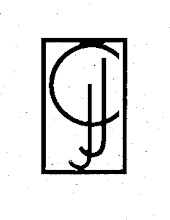 ormally, I’m a patient and reserved individual. But when it comes to littering, I have a short fuse.
ormally, I’m a patient and reserved individual. But when it comes to littering, I have a short fuse.The Antilitter Crusader
If I actually catch people in the act of littering and I’m near enough to confront them, I practice some deep breathing to suppress my anger before initiating my antilitter operation.
First, I pick up whatever has been tossed to the ground. “Excuse me, excuse me!” I call out to the culprits.
They stop, wondering whether they know me or whether I’m about to con them or whether I’m an evangelist. And before they can figure it out, I sweetly say with a smile and look of concern, “You dropped this.” And as I say it, I put the litter back in the hands of the litterers. Before their dumbfoundedness turns into something else, I walk away. Mission accomplished.
Well, maybe not. I probably haven’t changed their habits. But I’m usually able to get that one piece of litter disposed of properly.

Profile of a Litterer
Now there are people here who will tell you that littering is cultural (meaning immigrants are the perpetrators) or socioeconomic (only poor people do it). But I can assure you that litterers in this city cross all cultural, gender, age, and socioeconomic divides.
I’ve seen drivers of new Jaguars do it, real estate brokers, children, senior citizens, college students, and even cops. And since rescuing the pooch, my animosity toward litterers has deepened, for walking a dog provides an entirely new perspective on how much debris we walk past every day.
In addition to the obvious that dot the curbs of my street—Corona beer bottles, Starbucks cups, children’s homework assignments, business promotion fliers—there are the small or unexpected: still-burning cigarettes, gum, used condoms, nearly empty Viagra packs, glass shards, and carry-out meals.
I realize that some of the items I’ve listed are organic (food) or seem inconsequential (cigarette butts). But where a dog is concerned, these are hazards.
Dogs and Debris
I have a strong-willed god-puppy who ingests everything his eyes or nose leads him to: banana peels, potato chip bags, mittens, pens, action figures. Just walking half a block with him can be a nightmare.
My own pooch has Mr. Magoo–like tendencies and I have to be ever-mindful of what she’s about to step on or in. Yesterday, I didn’t see the white chewing gum.
I spent last night trying to tease out the gum and all the other icky elements it had collected from the space between the pooch’s paw pads. I got about half of it out, along with most of her hair. I’ll be working on it more today.
Antilitter Campaign Redux
If you’re one of the thousands of people who flick their “finished” cigarettes to the ground without a thought, please think anew. Though a cigarette is small and contains organic materials, it still qualifies as litter. And if it’s still burning, it can harm someone (especially if it catches in a breeze). Gum is a danger to animals and high-end footwear. And food, well . . .
Here’s the bottom line: If what you’re about to toss on the ground didn’t grow there in the first place in the form it’s currently in, then hold onto it until you can dispose of it properly. For instance, let’s say you’re about to dump last night’s vegetable fried rice in the park. The birds will love it, you claim. Yes, you may argue that it originated in the ground. However, you would certainly agree that it did not sprout up all seasoned and julienned like it is now. Hence, you mustn’t share it with your avian friends.
Let’s start a new crusade together to be better stewards of our environment. The pooch will appreciate it.
[Photo is a poster from an antilitter campaign in San Francisco, where gum accounts for 41% of small litter.]



No comments:
Post a Comment